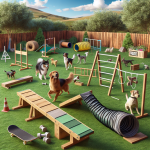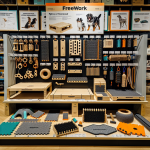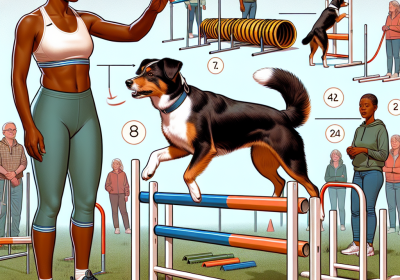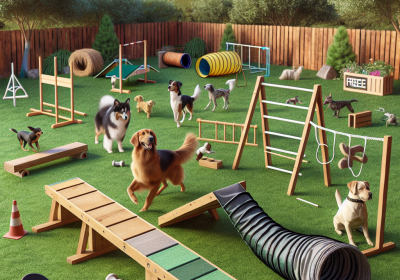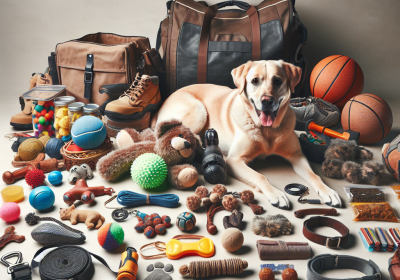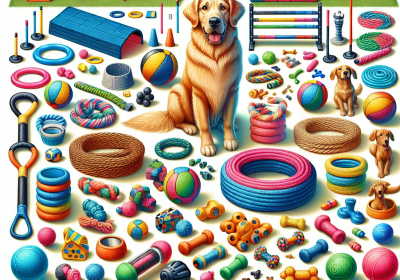Safety Measures for Canine Freework Equipment
- Table of Contents
Safety Measures for Canine Freework Equipment
Ensuring the safety of canine freework equipment is paramount to providing a secure and enriching environment for dogs. Canine freework, which involves allowing dogs to explore and interact with various objects and surfaces, can significantly enhance their physical and mental well-being. However, without proper safety measures, the risk of injury or stress can increase. Key safety measures include regular inspection and maintenance of equipment, ensuring that all materials are non-toxic and free from sharp edges, and providing appropriate supervision during freework sessions. Additionally, understanding the individual needs and limitations of each dog can help in selecting suitable equipment and activities, thereby promoting a safe and enjoyable experience for all participants.
Importance Of Regular Inspections For Canine Freework Equipment
Ensuring the safety and well-being of our canine companions during freework activities is paramount. One of the most critical aspects of maintaining a safe environment for these activities is the regular inspection of canine freework equipment. Regular inspections are essential to identify potential hazards, prevent accidents, and ensure that the equipment remains in optimal condition for use. By understanding the importance of these inspections, dog owners and trainers can create a safer and more enjoyable experience for their pets.
Firstly, regular inspections help in identifying wear and tear that may not be immediately visible. Over time, even the most durable equipment can degrade due to constant use and exposure to various environmental factors. For instance, agility tunnels, jumps, and weave poles can suffer from material fatigue, leading to weakened structures that may collapse or break unexpectedly. By conducting routine checks, one can spot frayed edges, cracks, or other signs of deterioration early on, allowing for timely repairs or replacements. This proactive approach significantly reduces the risk of injuries to the dogs, ensuring their safety during freework sessions.
Moreover, regular inspections play a crucial role in maintaining the hygiene of the equipment. Canine freework often involves outdoor activities where equipment can accumulate dirt, mud, and other contaminants. These elements can harbor bacteria and parasites, posing health risks to the dogs. By inspecting and cleaning the equipment regularly, one can prevent the buildup of harmful substances, thereby safeguarding the health of the animals. Additionally, clean equipment is less likely to cause skin irritations or infections, contributing to the overall well-being of the dogs.
In addition to physical wear and hygiene, regular inspections also help in assessing the functionality of the equipment. Over time, certain components may become loose or misaligned, affecting the performance and safety of the equipment. For example, the hinges on adjustable jumps may loosen, causing instability, or the connections on a dog walk may weaken, leading to potential collapses. By routinely checking these elements, one can ensure that all parts are secure and functioning correctly, providing a stable and safe environment for the dogs to perform their activities.
Furthermore, regular inspections foster a sense of responsibility and diligence among dog owners and trainers. By making inspections a routine part of their maintenance schedule, they demonstrate a commitment to the safety and well-being of their canine companions. This practice not only enhances the trust between the dogs and their handlers but also sets a standard for others in the community to follow. It encourages a culture of safety and care, where the welfare of the animals is always a top priority.
In conclusion, the importance of regular inspections for canine freework equipment cannot be overstated. These inspections are vital for identifying wear and tear, maintaining hygiene, assessing functionality, and fostering a culture of responsibility. By incorporating regular checks into their routine, dog owners and trainers can ensure that their equipment remains safe and reliable, providing a secure environment for their canine companions to enjoy freework activities. Ultimately, this proactive approach not only prevents accidents and injuries but also enhances the overall experience for both the dogs and their handlers.
Proper Storage Techniques To Maintain Canine Freework Gear

Proper storage techniques are essential to maintain the integrity and longevity of canine freework gear. Ensuring that equipment is stored correctly not only extends its lifespan but also guarantees the safety and well-being of the dogs using it. To begin with, it is crucial to clean all gear thoroughly before storage. Dirt, sweat, and other residues can degrade materials over time, leading to potential hazards. For instance, harnesses and leashes should be washed according to the manufacturer’s instructions, typically involving mild soap and water, and then allowed to air dry completely. This prevents the growth of mold and bacteria, which can compromise the equipment’s strength and pose health risks to the dog.
Once the gear is clean and dry, it is important to store it in a cool, dry place. Excessive heat and humidity can weaken materials such as nylon, leather, and metal, making them more prone to breaking under stress. A well-ventilated area with consistent temperature and low humidity is ideal. Additionally, keeping the gear out of direct sunlight prevents UV damage, which can cause fading and brittleness. For items like agility tunnels and jumps, disassembling them and storing them in their original packaging or a designated storage container can help protect them from environmental factors and physical damage.
Organizing the storage space is another key aspect of maintaining canine freework gear. Using hooks, shelves, and bins can help keep items off the ground and reduce the risk of them being stepped on or chewed by curious pets. Labeling containers and designating specific areas for different types of equipment can also make it easier to find and access items when needed, thereby reducing wear and tear from unnecessary handling. Furthermore, it is advisable to inspect the gear regularly for signs of wear and damage. This proactive approach allows for timely repairs or replacements, ensuring that the equipment remains safe and functional.
In addition to physical storage considerations, it is important to keep a record of the maintenance and usage history of each piece of equipment. This can be done through a simple logbook or digital tracking system. Recording details such as the date of purchase, cleaning schedule, and any repairs made can provide valuable insights into the condition of the gear and help identify patterns that may indicate the need for more frequent maintenance or replacement. This practice not only enhances the safety of the equipment but also contributes to more efficient management of resources.
Moreover, it is essential to educate all individuals involved in the care and use of canine freework gear about proper storage techniques. This includes trainers, handlers, and even pet owners who may be using the equipment at home. Providing clear instructions and guidelines can help ensure that everyone is aware of the best practices for maintaining the gear, thereby promoting a culture of safety and responsibility.
In conclusion, proper storage techniques are vital for maintaining canine freework gear. By cleaning equipment thoroughly, storing it in appropriate conditions, organizing the storage space, keeping detailed records, and educating all users, the longevity and safety of the gear can be significantly enhanced. These measures not only protect the investment in the equipment but also ensure the well-being of the dogs that rely on it for their training and exercise.
Selecting The Right Materials For Safe Canine Freework Equipment
When selecting materials for canine freework equipment, ensuring the safety and well-being of the dog is paramount. The choice of materials directly impacts the durability, functionality, and safety of the equipment. Therefore, it is essential to consider several factors when making these decisions. First and foremost, the materials must be non-toxic. Dogs are known to chew and lick their surroundings, and any toxic substances can pose significant health risks. Consequently, it is advisable to opt for materials that are free from harmful chemicals and have been tested for safety. For instance, food-grade plastics and non-toxic rubber are excellent choices for various components of freework equipment.
In addition to being non-toxic, the materials should also be durable. Canine freework often involves vigorous activities, and the equipment must withstand the wear and tear associated with such exercises. High-quality materials such as heavy-duty nylon, reinforced fabrics, and robust metals can ensure the longevity of the equipment. Durability not only extends the life of the equipment but also prevents potential injuries that could arise from broken or damaged components.
Moreover, the materials should provide adequate grip and traction. Dogs need stable surfaces to perform freework exercises safely. Slippery materials can lead to accidents and injuries. Therefore, selecting materials with textured surfaces or anti-slip properties is crucial. Rubber mats, for example, offer excellent traction and can be used for various freework activities. Additionally, materials that are easy to clean and maintain are highly desirable. Hygiene is a critical aspect of canine health, and equipment that can be easily sanitized helps prevent the spread of bacteria and other pathogens. Materials such as stainless steel and certain types of plastics are not only durable but also easy to clean, making them ideal for canine freework equipment.
Furthermore, the weight of the materials should be considered. Equipment that is too heavy can be cumbersome for both the dog and the handler. Lightweight materials such as aluminum or certain composites can provide the necessary strength without adding excessive weight. This consideration is particularly important for portable equipment that needs to be moved frequently.
Another important factor is the flexibility of the materials. Some freework exercises require equipment that can bend or flex without breaking. Materials such as flexible plastics or certain types of rubber can accommodate these needs. However, it is essential to ensure that the flexibility does not compromise the overall strength and durability of the equipment.
Additionally, the environmental impact of the materials should not be overlooked. Sustainable and eco-friendly materials are becoming increasingly important in all aspects of life, including canine freework equipment. Opting for materials that are recyclable or made from renewable resources can contribute to environmental conservation efforts.
In conclusion, selecting the right materials for safe canine freework equipment involves a careful balance of several factors. Non-toxicity, durability, grip, ease of maintenance, weight, flexibility, and environmental impact all play crucial roles in ensuring the safety and effectiveness of the equipment. By considering these factors, one can make informed decisions that prioritize the well-being of the dog while also providing functional and long-lasting equipment.
Read more about Canine Freework
Equipment Needed for Canine Freework
– Essential Equipment for Canine Freework
– DIY Canine Freework Equipment
– Safety Measures for Canine Freework Equipment
– Different Brands and Options for Canine Freework Equipment
– How to Properly Use Canine Freework Equipment


